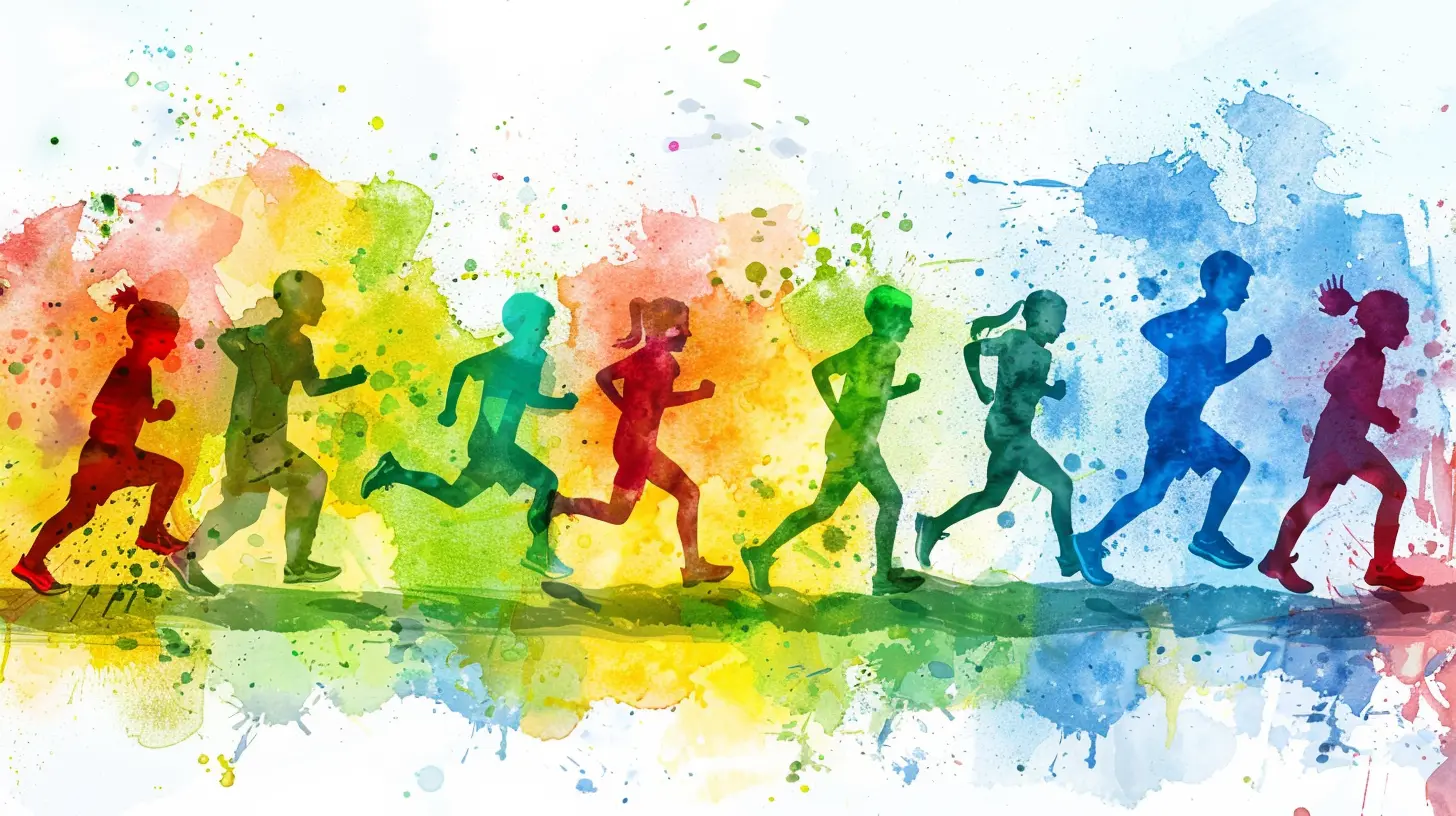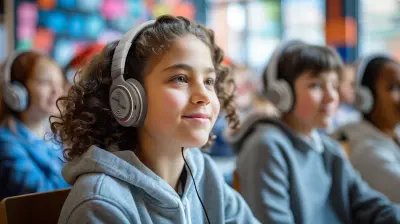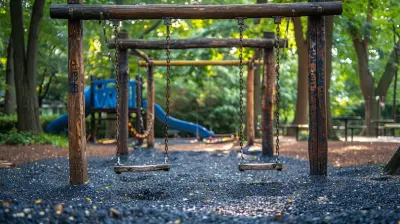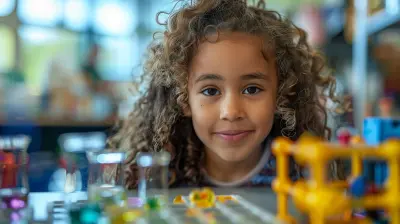18 January 2025
When it comes to youth sports, there’s a growing debate: Should kids specialize in a single sport or try out multiple sports? You might have heard from some parents or coaches that focusing on one sport from an early age is the key to success. But is that really the best way to go? Actually, multi-sport participation has some incredible benefits for youth development. Let’s dive into why encouraging kids to play a variety of sports might be the best approach for their physical, mental, and social growth.

What is Multi-Sport Participation?
Before we get into the nitty-gritty, let’s clarify what we mean by multi-sport participation. It’s pretty simple, really! It refers to kids engaging in more than one sport—often rotating between different sports throughout the year or even playing multiple sports simultaneously. Think of a child who plays soccer in the fall, basketball in the winter, and maybe baseball or track in the spring. They get exposed to different physical challenges, new teammates, and unique coaching styles.Now, let’s explore the amazing benefits that come from this well-rounded approach.

Physical Benefits of Multi-Sport Participation
1. Balanced Muscle Development and Injury Prevention
One of the biggest advantages of playing multiple sports is that it promotes balanced muscle development. When kids play just one sport year-round, they tend to overuse specific muscle groups. This increases their risk of overuse injuries—think of a young pitcher who only plays baseball and ends up with shoulder problems. By switching between different sports, kids engage various muscles, allowing their bodies to develop more evenly.For instance, a kid who plays soccer and basketball is working on different types of movement. Soccer focuses on endurance, agility, and lower body strength, while basketball emphasizes explosive power, hand-eye coordination, and upper body strength. This variety helps prevent burnout and the repetitive strain that often comes from focusing on just one set of skills.
2. Improved Athleticism and Motor Skills
Kids who play multiple sports often develop better overall athleticism. Why? Because each sport brings its own set of skills and challenges. For example, swimming builds cardiovascular endurance, while gymnastics enhances flexibility and balance. When a child can pull from this diverse skill set, they become more adaptable athletes. This cross-training effect improves their motor skills, balance, coordination, and agility.Even if your child eventually chooses to specialize in a particular sport later in their teenage years, having a wide foundation of athletic skills makes them better equipped to excel in any athletic endeavor.
3. Better Long-Term Health
Let’s not forget the long-term health benefits. Playing a variety of sports helps kids stay physically active throughout the year, which combats the sedentary lifestyle that’s becoming all too common. It also reduces the likelihood of early burnout—something that can happen when kids are pushed too hard in a single sport from a young age.By keeping things fresh and exciting with new sports, children are more likely to stay engaged in physical activity well into adulthood. That’s a win for lifelong health!
Mental and Emotional Benefits of Multi-Sport Participation
1. Reduced Pressure and Burnout
Remember when sports were fun? For a lot of kids who specialize early, sports can start to feel like a job, complete with pressure from parents and coaches to constantly improve. By encouraging multi-sport participation, you help maintain the fun factor. When kids can rotate between different activities, they’re less likely to feel the pressure to be perfect in just one sport.This variety also reduces the risk of burnout. Imagine eating the same meal every day—eventually, you’d get sick of it, right? The same goes for sports. Playing multiple sports keeps things exciting and allows kids to enjoy the learning process without the overwhelming pressure to "make it" in one specific discipline.
2. Improved Mental Toughness and Problem-Solving Skills
Different sports bring different challenges. In basketball, you might have to make a split-second decision about whether to pass or shoot. In soccer, you’re constantly strategizing where to move on the field. In track and field, it’s all about personal timing and pacing.By participating in multiple sports, kids are constantly exposed to diverse situations where they need to think on their feet, adapt strategies, and overcome challenges. This builds mental toughness and enhances problem-solving skills—attributes that are valuable not just in sports, but in life.
3. Boosts Confidence and Self-Esteem
Trying out new sports means stepping out of one’s comfort zone, which is a great way for kids to build confidence. When they succeed in a new sport—or even just improve—they gain a sense of accomplishment. This boost in self-esteem carries over into other areas of their lives, whether it’s in school or social situations.Furthermore, multi-sport participation allows kids to experience both wins and losses across different platforms. Learning how to handle victory and defeat graciously is an important life skill, and when kids are exposed to multiple sports, they become more resilient in the face of challenges.
Social and Psychological Benefits of Multi-Sport Participation
1. Exposure to Different Social Circles
One of the best aspects of playing multiple sports? Meeting new people! Each sport comes with its own team, coaches, and community. This means that kids who play multiple sports are constantly exposed to new social situations, building their social skills and expanding their network of friends.Interacting with different teammates also helps kids learn how to work with various personalities and leadership styles. They might be the star player on one team and a supportive benchwarmer on another. These diverse experiences teach empathy, teamwork, and communication.
2. Reduces the Risk of Identity Crisis
For kids who specialize in one sport, their identity can become deeply tied to that sport. What happens if they get injured or lose interest in it? They’re left feeling lost and unsure of who they are without the sport dominating their life.Multi-sport participation helps prevent this identity crisis. By being involved in multiple activities, kids develop a broader sense of self. They learn that they’re not just "a soccer player" or "a gymnast"—they are multi-dimensional individuals with a wide range of talents and interests. This makes it easier for them to navigate the ups and downs of adolescence with a more balanced sense of identity.
Academic and Cognitive Benefits of Multi-Sport Participation
1. Improved Academic Performance
Believe it or not, playing multiple sports can actually help kids perform better in school. How? By engaging in different sports, kids learn valuable life skills such as time management, discipline, and focus. Balancing multiple sports with school requires them to prioritize tasks and manage their time efficiently, which easily translates into academic success.There’s also evidence that physical activity boosts brain function. Multi-sport participation keeps kids active, which in turn enhances their cognitive abilities, including memory, attention span, and problem-solving skills.
2. Encourages Lifelong Learning and Growth Mindset
Playing multiple sports encourages kids to adopt a growth mindset—a belief that abilities can be developed through dedication and hard work. In each new sport, there’s always something to learn. Whether it’s mastering a new skill in tennis or understanding a new strategy in basketball, kids are constantly learning and improving.This mindset carries over into the classroom and other areas of life. Kids who participate in multiple sports are more likely to approach challenges with a positive attitude, seeing them as opportunities for growth rather than insurmountable obstacles.
When is Specialization Okay?
Of course, there are times when specializing in one sport becomes necessary, especially for teens aiming to play at a collegiate or professional level. Most experts agree that before the age of 12 or 13, specialization isn’t necessary and could even be harmful. However, as kids grow older and express a strong passion for one particular sport, it’s okay to focus more on that activity.The key is to ensure kids have a solid foundation of physical, emotional, and social skills before narrowing their focus. A well-rounded athlete will be better prepared for the rigors of specialization if and when the time comes.
Conclusion: Let Kids Play!
At the end of the day, the most important thing is that kids are having fun and staying active. Multi-sport participation offers a wealth of physical, mental, emotional, social, and cognitive benefits that can help children grow into well-rounded, resilient individuals. Whether or not they end up specializing in a single sport later in life, encouraging them to explore different athletic opportunities can set them up for success both on and off the field.So, let kids play, explore, and enjoy the wide world of sports. After all, variety is the spice of life!












Theodora Hill
This article raises fascinating points about multi-sport participation! I wonder how different sports contribute uniquely to personal skills and social development in youth—could the benefits be more profound than we realize?
April 3, 2025 at 12:34 PM